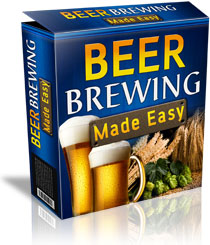Jake Evan’s Beer Brewing Made Easy is a digital programme that teaches you how to make your own beer with step-by-step instructional guides and videos.
 But it’s not written by any old Tom, Dick or Harry. What makes this programme different is that Jake was a brewing master at a commercial brewery for over 30 years. During that time, like any master craftsman, he kept a journal of all of the beer he made, meticulously recording details of every batch and recipe, what worked and what did not, and which recipes lead to great tasting beer, and which ones did not.
But it’s not written by any old Tom, Dick or Harry. What makes this programme different is that Jake was a brewing master at a commercial brewery for over 30 years. During that time, like any master craftsman, he kept a journal of all of the beer he made, meticulously recording details of every batch and recipe, what worked and what did not, and which recipes lead to great tasting beer, and which ones did not.
When home brewing became legal in the United State, Jake began brewing at home as well. Free from the constraints of a commercial brewery, he was free to experiment, and to perfect his recipes for the home brewer.
And now, he is making all of that knowledge available to any home brewer. Not only is he providing over 700 recipes in his package, but he explains every step of the process in simple to understand language. As an added feature, the package also includes videos of all of the steps involved, so you can see how easily it is to make your very own great tasting beer at home. No more trying to follow a text description that may or may not describe exactly what you see. Simply watch the video and see it done. It’s like being right next to Jake as he brews his secret formula beer.
If you are a complete beginner, don’t be intimidated. Jake explains all of the steps to getting your first batch of beer brewed simply and quickly, even if you’ve never made beer before. He explains how to use all of the equipment required, not that there’s a lot of it, and expertly covers the basics, like where to get the gear, how to make sure that it is properly sanitised ( it’s not as complex as it sounds ), and the importance of each of the different ingredients and the part that they play in the beer making process ( this is usually where beginners come unstuck – getting the ingredient balance wrong can be disastrous ).
If you are a seasoned brewer, dont worry that this is too simple for you. While some of the content may seem like revision, when a brewer with Jake’s experience talks, I listen. It’s worth reviewing all of the material at least once, there’s bound to be a tip or two that can be used to improve your current product. Not to mention the 700 recipes that Jake reveals. Surely there’s a few in there that tickle your taste buds. And in the unlikely event that there isn’t, Jake offers an unconditional 60 day 100% money back guarantee, so you really can’t lose.
As an added bonus, Jake also explains how to turn your hobby into a lucrative business. Wouldn’t that be great! I’m sure that everyone would love a little extra cash, and if you can get it by doing something that you enjoy, it’s not really even work! Whether you simply want to cover your costs, and thereby enjoy effectively free beer for the rest of your life ( and who wouldn’t like that ), or turn a substantial second income ( great for keeping the other half happy ), this bonus guide is a must have.
So, where do you get it? Jake Evan’s Beer Brewing Made Easy is offered through ClickBank, the largest and most trusted seller of electronic products on the Internet. So your satisfaction is guaranteed. Also, you are protected by Jake’s personal 60 day, 100% money back guarantee. If you are unhappy with the programme for any reason, you can simply drop Jake a note and your purchase price will be refunded, no questions asked. What could be safer? Just click here.
